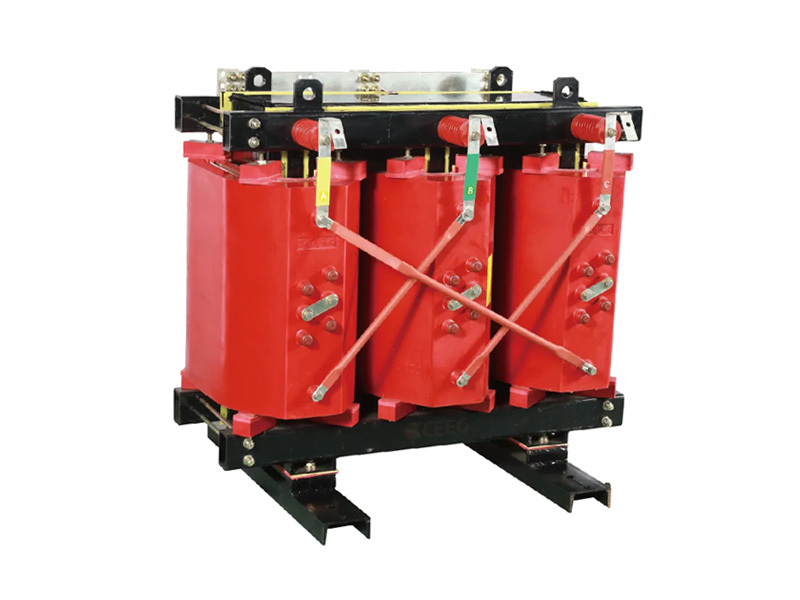He' Nan Chineng Electric Power Equipment Co., Ltd
Why Choose Oil-immersed Transformers for Efficient Energy Distribution?
Apr 20,2025
Why Choose Oil-immersed Transformers for Efficient Energy Distribution?
Introduction to Oil-immersed Transformers
Oil-immersed transformers are a crucial component in electrical power distribution systems. They are designed to efficiently manage the transmission of electricity from generation sites to end-users. As energy demands continue to grow, understanding the benefits and functionalities of oil-immersed transformers becomes increasingly important.
The Basics of Transformer Technology
Transformers, in general, serve an essential purpose in electrical engineering. They convert high voltage electricity to lower voltage levels suitable for consumer use. Oil-immersed transformers, specifically, utilize oil as an insulator and coolant, offering several advantages over their dry-type counterparts.
What are Oil-immersed Transformers?
Oil-immersed transformers are designed with a tank filled with insulating oil. This oil not only provides insulation but also facilitates cooling by dissipating heat generated during the transformer's operation. The oil-immersed design enables these transformers to handle larger capacities and operate efficiently for extended periods.
Key Components of Oil-immersed Transformers
Understanding the components of oil-immersed transformers is key to appreciating their functionality:
- Core: Made of laminated silicon steel to minimize energy losses.
- Windings: Copper or aluminum conductors wound around the core, facilitating electrical energy conversion.
- Insulating Oil: Provides electrical insulation and thermal management.
- Tank: Houses the core and windings, filled with insulating oil.
- Cooling System: Often includes radiators or fans for enhancing cooling efficiency.
Advantages of Oil-immersed Transformers
1. Enhanced Cooling and Thermal Management
The ability of oil to absorb and dissipate heat is one of the most significant advantages of oil-immersed transformers. This efficient cooling system allows transformers to operate at higher capacities without overheating. As a result, they maintain optimal performance levels, even under heavy loads.
2. Superior Insulation Properties
The insulating oil used in these transformers provides excellent dielectric strength, ensuring that electrical components remain protected from short circuits and other failures. This characteristic contributes to the overall reliability and longevity of the transformer.
3. Greater Energy Efficiency
Oil-immersed transformers minimize energy losses during operation. The combination of superior insulation and effective cooling helps maintain high levels of efficiency, thereby reducing operational costs for utilities and businesses alike.
4. Increased Load Capacity
Oil-immersed transformers can handle larger load capacities compared to dry-type transformers. This is particularly beneficial in applications where energy demand is high, allowing for expanded service capabilities without the need for additional transformers.
5. Longevity and Durability
Built to last, oil-immersed transformers have a longer lifespan than their dry-type counterparts. The protection offered by the insulating oil helps mitigate the effects of aging and environmental factors, ensuring that these transformers operate effectively for decades.
Applications of Oil-immersed Transformers
1. Power Generation Facilities
Oil-immersed transformers are commonly used in power plants to step up the voltage for transmission over long distances. Their ability to handle high capacities makes them indispensable in this sector.
2. Industrial Applications
Many industrial settings utilize oil-immersed transformers to meet their high energy demands. From manufacturing plants to mining operations, these transformers provide the reliability and efficiency required for continuous production.
3. Urban Power Distribution
In urban environments, oil-immersed transformers are essential for distributing electricity across neighborhoods and commercial areas. Their efficiency helps meet the high energy requirements of densely populated regions.
4. Renewable Energy Integration
As renewable energy sources like wind and solar become more prevalent, oil-immersed transformers play a vital role in integrating these power sources into existing electrical grids. Their efficiency supports the transition to greener energy solutions.
Maintenance of Oil-immersed Transformers
1. Regular Inspections
Routine inspections are essential for identifying potential issues before they escalate. Monitoring the condition of the insulating oil, physical components, and connections can prolong the lifespan of the transformer.
2. Oil Analysis
Performing regular oil analysis can provide valuable insights into the health of the transformer. Tests can reveal the presence of contaminants, moisture, and other factors that may affect performance.
3. Cooling System Maintenance
Ensuring that the cooling system functions properly is critical for maintaining the efficiency of oil-immersed transformers. Regular cleaning and checks can prevent overheating and extend operational life.
4. Addressing Leaks Promptly
Any signs of oil leakage must be addressed immediately. This not only protects the environment but also ensures that the transformer continues to operate effectively.
Choosing the Right Oil-immersed Transformer
1. Determining Load Requirements
Before selecting an oil-immersed transformer, it's essential to assess the load requirements. Understanding peak demands and future growth can help in choosing the right transformer size.
2. Evaluating Environmental Factors
Consideration of the installation environment is vital. Factors such as temperature, humidity, and proximity to other equipment can influence the selection of transformer specifications.
3. Consulting with Experts
Engaging with industry experts can provide valuable insights into the best transformer options based on specific needs. Their expertise can help ensure optimal performance and compliance with regulations.
Safety Considerations with Oil-immersed Transformers
1. Fire Hazards
While oil-immersed transformers are designed with safety features, there is still a risk of fire due to the flammable nature of the insulating oil. Implementing safety measures and monitoring systems can mitigate these risks.
2. Environmental Impact
Proper disposal and handling of oil is critical to minimize environmental contamination risks. Following regulatory guidelines ensures safe practices in managing oil-immersed transformers.
3. Electrical Safety Protocols
Adhering to electrical safety protocols during installation and maintenance is essential for the protection of personnel and equipment. Regular training and safety drills can foster a culture of safety.
FAQs about Oil-immersed Transformers
1. What is the primary function of an oil-immersed transformer?
Oil-immersed transformers convert high voltage electricity to lower voltage levels for safe distribution. They also provide insulation and cooling for efficient operation.
2. How long do oil-immersed transformers typically last?
With proper maintenance, oil-immersed transformers can last for several decades, often exceeding 30 years of operational life.
3. What are the benefits of using oil over dry-type transformers?
Oil-immersed transformers offer superior cooling, better insulation properties, higher load capacities, and longer operational lifespan compared to dry-type transformers.
4. Are there any environmental concerns with oil-immersed transformers?
Yes, the insulating oil can pose environmental risks if not handled correctly. Proper maintenance and disposal practices are essential to mitigate these concerns.
5. How often should oil-immersed transformers be maintained?
Routine maintenance should be conducted at least annually, with more frequent inspections recommended based on operational demands and environmental conditions.
Conclusion
Choosing oil-immersed transformers for energy distribution is a strategic decision that enhances efficiency, reliability, and longevity. Their superior cooling properties, excellent insulation, and ability to handle larger loads make them an ideal choice for various applications in modern electrical systems. As we continue to transition to more sustainable energy solutions, oil-immersed transformers will remain pivotal in ensuring efficient and effective energy distribution. Investing in these transformers today means securing a more reliable energy future for tomorrow.










